Sir Oliver was a handsome twentieth-century matinée idol who had a habit of going off script and speaking out of line. Perhaps this was because Sir Oliver was not a man of royalty, but a female cockatoo that had the gift of gab. Or maybe it was because Sir Oliver spent many of her down-time hours with the loquacious, merry pranksters of America’s first professional theatrical club, The Lambs.

Sir Oliver was the pet of Jerome H. Sykes, a comic actor and opera singer. Sykes, who rose to fame with the Bostonians, was best known for his portrayal of Constable Foxy Quiller, a bumbling, overweight detective who first appeared in “The Highwayman” in 1897 (Sykes created the character for the comic opera). In 1900, Reginald De Koven (music) and Harry B. Smith (lyrics) wrote a new operetta based on the character called “Foxy Quiller.”

Sir Oliver was reportedly from Australia, and had beautiful blue and red feathers and green wings. Sykes bought the parrot from a street vendor, and carried her around with him while he was performing with the Klaw & Erlander Opera Company in “Foxy Quiller.” Not only was Sir Oliver a pet; she was also one of Sykes’ co-stars, appearing as Polly in the comic opera.
According to news reports, Sir Oliver was trained by a French animal and bird trainer in New York to follow cues and speak several lines in “Foxy Quiller.” In the operetta, Sykes has a conversation with Polly, who is supposedly the only witness to a crime.
During the conversation, Polly gives him a clue to the whereabouts of a “Japanese dwarf” named Kimono who has just robbed a sailor.
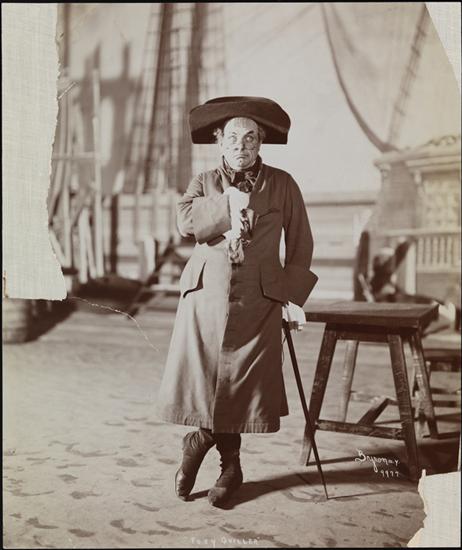
Polly Want a Cracker?
One of the songs from the opera was called Polly Want a Cracker?, which you can hear (instrumental only) by clicking here.
Polly Want A Cracker? Pretty Polly, witty Polly, instinct with the critter was sublime. He was full of rhyme and reason, always had a word in season, coming in just at the proper time. Polly, Pretty Polly! Fond of youth and fond of folly, full of conversation all the day. He was up to snuff, that parrot, and his brain was eighteen carat, for he knew the thing to say? Knew the proper thing to say.
Two months after “Foxy Quiller” opened in New York, the Klaw & Erlander Opera Company took the show to Chicago. Sir Oliver was placed in a baggage compartment on the train and left there overnight.
When Sykes went to get the bird the next day, his water bowl was frozen but the tropical bird was somehow still alive. As Sykes told the press, “Lor’ bless you, that bird had kept so much tropical warmth in his body and replenished it from the snow that we thawed him out without the slightest difficulty.”
When Sir Oliver wasn’t performing or traveling with the opera company, she spent time in a bird store on Broadway. There, she would sit in a window and attract much attention by repeating lines from her conversation with Foxy. One day an Irish laborer reportedly took offense when she spoke, “The red’s above the green. Streak of yellow, eh?”
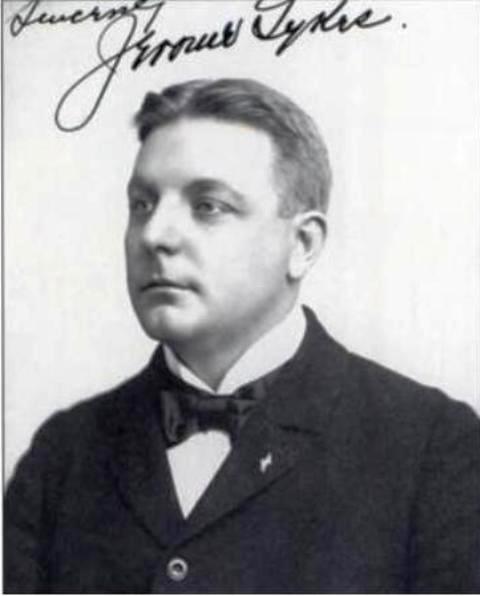
When Jerome Sykes wasn’t performing, he spent time with his second wife, the actress Jessie Wood, at their city home at 200 West 80th Street (his first wife, Agnes Sherwood, was a light opera singer who died in 1896).
During the off-season, they enjoyed spending time with their horses, dogs, and cats on their 65-acre country estate that overlooked the Stony Brook Harbor on Three Sisters Road in St. James, Long Island. There, despite his size (he weighed over 300 pounds) Sykes enjoyed playing baseball, swimming, rowing, fishing, and attending balls and social affairs with the many other New York actors that gathered at the actors’ colony in St. James.
The Silence of The Lambs
Jerome Sykes was also a member of The Lambs’ Club, which bills itself as America’s first professional theatrical club. This club was formed during the Christmas week of 1874 at Delmonico’s restaurant on 14th Street by matinée star Henry Montague. The club was named after a London club–of which Montague was a member–that honored the essayist Charles Lamb. Its president was called the Shepherd and its members were the Flock.
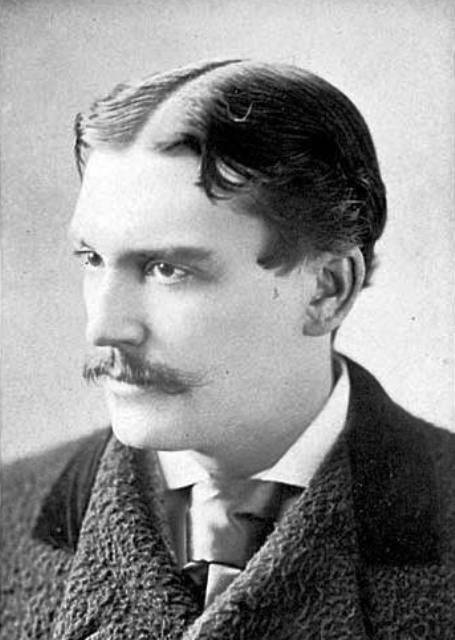
After Montague passed in 1878, the newly incorporated Lambs Club met every other week for dinner at the Union Square Hotel to glorify the late idol. They moved into a four-story brownstone at 34 West 26th Street in 1880, which served as their headquarters until about 1892. The brownstone had a large back yard with a marquee that was illuminated with Chinese lanterns, where some of the younger members would have boisterous parties in the summer months.
Apparently, the neighbors were not very fond of these late-night summer gatherings. Although the parties quieted down after Washington Irving Bishop, a mind reader, died at the club in 1888, the noise levels picked up within a year of his death.
In 1890, several neighbors, including Dr. William R. Chichester at #36 West 26th Street and Miss M.L. Thomas at #32, complained that The Lambs were carrying “their bleatings so far into the early morning hours that they became intolerable.”
Miss Thomas and her 90-year-old mother told police of the Nineteenth Police Precinct that the bleating was more like bellowing. Another neighbor, Mr. J.L. Reed, who lived on the third floor of #34, threatened to turn a water hose on The Lambs when they were outside in the yard making noise.
The neighbors were finally successful in silencing The Lambs when the club moved out and the New York Press Club moved in.
Sir Oliver Joins The Lambs
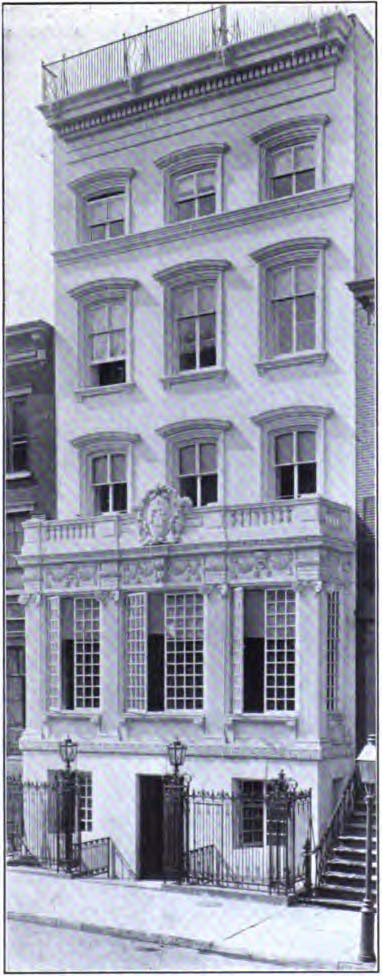
For the next few years, The Lambs moved around a bit, trying their luck at 8 West 29th Street until a neighbor complained about the bleating (apparently they made quite a ruckus playing pool), and later, at 26 West 31st Street. They finally settled in for a few years at 70 West 36th Street, which is where Sir Oliver joined the Flock.
The decision to make Sir Oliver a mascot was inspired by playwright Augustus Thomas sometime around 1900, during the tenure of Shepherd William DeWolf Hopper. According to the story, Thomas and Sykes were smoking and chatting one afternoon at the club when Sykes began talking about Sir Oliver.
“Do you know that that bird is a regular mischief-maker, and yet he brings me good luck,” Sykes said. “I don’t know what to make of him.”
“Why not a mascot of The Lambs?” Thomas asked. Sykes agreed it was a good idea, as long as the members approved.
Sir Oliver was welcomed to The Lambs, and he spent the next few years “sitting in the window and making life interesting” for those who passed by whenever he wasn’t performing on stage.
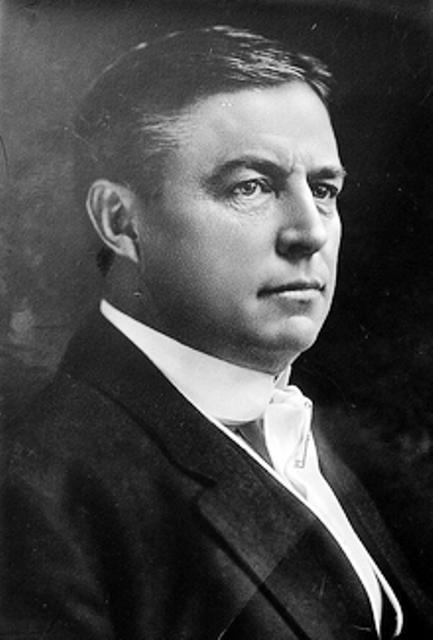
The Tragic Death of Jerome Sykes
In June 1902, The Lambs purchased a 37 x 100 foot lot at 128-130 West 44th Street from Minnie Lespinasse. They approached architects McKim, Mead and White, all of whom were members of the club, to design the new clubhouse.
The six-story marble Georgian building was completed in 1905; unfortunately, that was two years too late for Jerome Sykes.
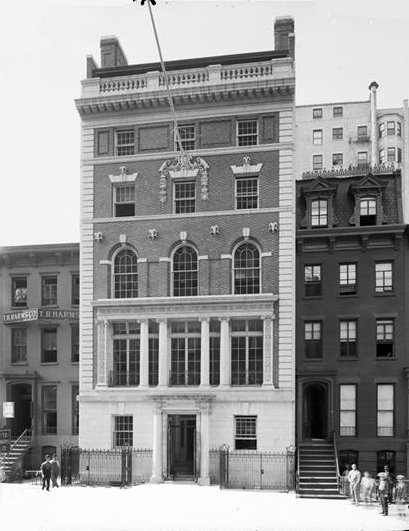
On Christmas Eve, 1903, Jerome Sykes became overheated while performing “The Billionaire” in Chicago. He sat near a window to cool down, and the rest, as they say, is history. Jerome was simply not as strong as Sir Oliver, and the frigid air brought on a cold that lead to pneumonia.
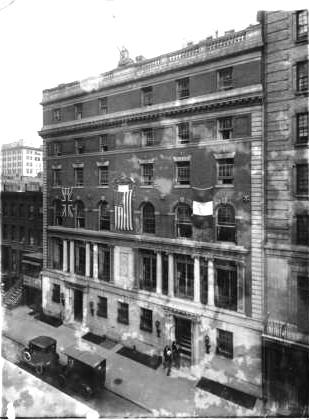
On December 29 at 4:30 p.m., he succumbed to his illness at the Hotel Stratford. Sadly, most of Jerome’s family members were trapped in St. James by a winter storm on the day of his funeral in New York City, and were unable to attend.
A few years after Jerome’s death, his family sold part of the estate in St. James to the sugar beet magnate James Guerreo Oxnard and his wife, Caroline Moss Thornton Oxnard. The Oxnard estate remained in the family until 1955, when it was demolished for construction of the Harbour Close housing development.
As for Sir Oliver, I trust he had a good life in the company of The Lambs. (Then again, maybe he escaped to Madison Square Park…)
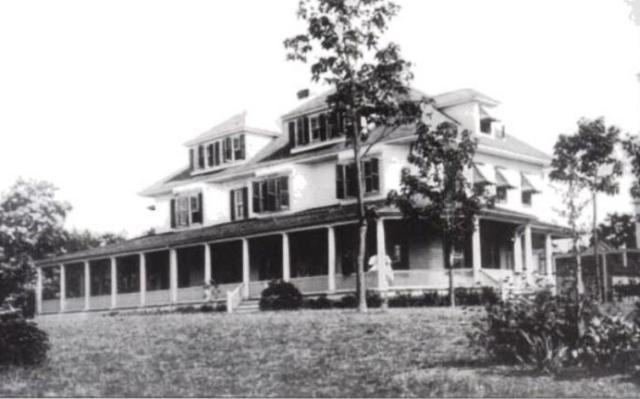



We love this! Thanks, Marc Baron, Shepherd, The Lambs, Inc., http://www.The-Lambs.org
I thought you would! Also, please see that Jerome’s name is added to the membership list on the website. I checked under “S” and did not see his name. I also want to hear more about your cat mascot!
Be happy to…do you have any info on when he joined? Also, would love to run a reprint of this in our next Club newsletter (credited of course.) Email me at info@the-lambs.org
[…] horses, camels, and donkeys appeared in many plays on the big stages of old New York, as did several birds and […]
[…] while back, I wrote about Sir Oliver, a parrot that performed on Broadway in the early 1900s and served as mascot for The Lambs, […]